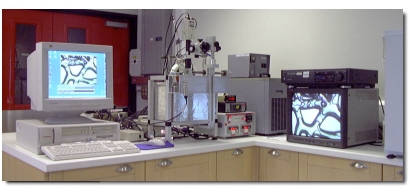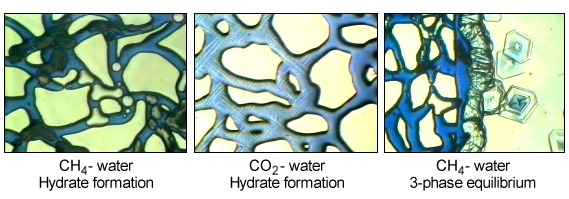Main applications
- Visual observation of gas hydrate formation and dissociation in various fluid systems.
- Effect of various chemicals (including salts, organic inhibitors and Low Dosage Hydrate Inhibitors) on crystal growth and morphology.
- Visual observation of gas hydrate distribution and the cementing characteristics of gas hydrates in porous media.
- Simulating various gas production scenarios from natural gas hydrates.
- Investigating the mechanisms of gas hydrate dissociation and gas release from natural gas hydrate reservoirs.
Operating conditions
Pressure: up to 1,200 psia (8 MPa)
Temperature: -20 ºC to 80 ºC
Description

The heart of the micromodel facility is an etched glass pore model consisting either of specifically designed geometrical networks such as tubes, or reproductions of actual thin sections of real sediments. The model has an inlet and outlet which allows fluids to be pumped through the enclosed pore network. Temperature is measured by a probe and can be kept stable to within 0.05 K. Pressure is monitored and controlled on both the inlet and outlet lines, allowing fluid flow to be closely controlled. A digital magnifying camera is used to capture video footage and still images of phase behaviour, which are stored by a PC. Some examples of images taken from the model are shown below.

